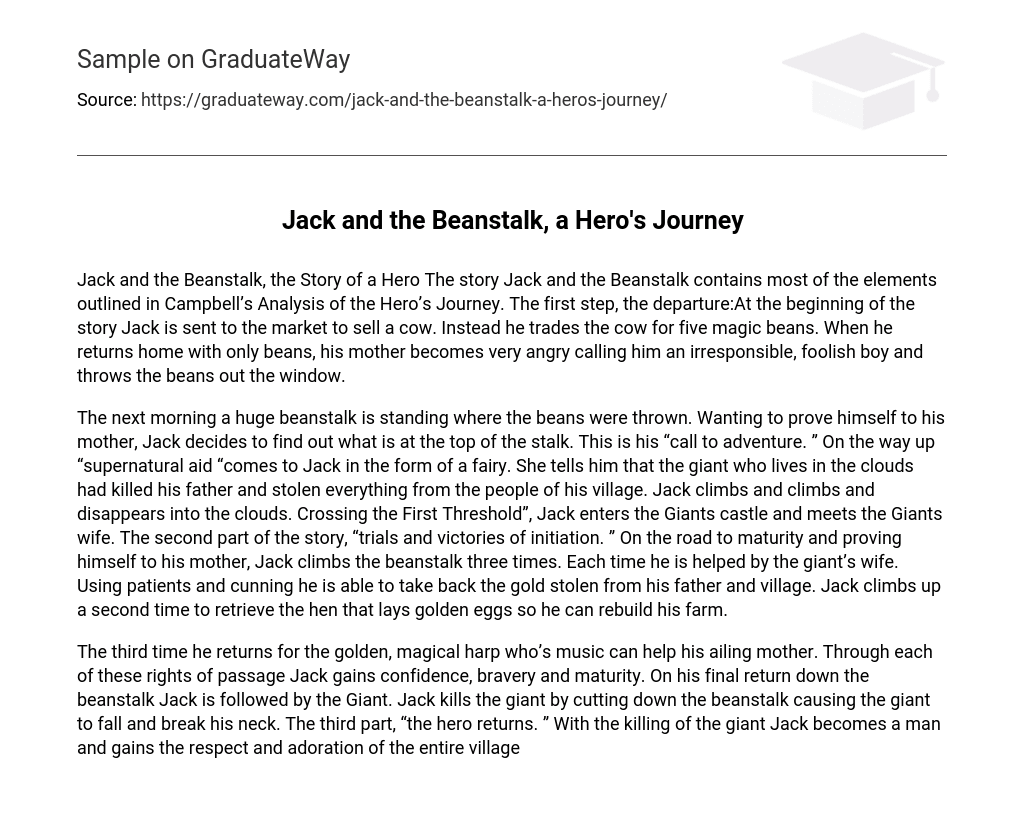The story Jack and the Beanstalk contains most of the elements outlined in Campbell’s Analysis of the Hero’s Journey. The first step, the departure:At the beginning of the story Jack is sent to the market to sell a cow. Instead he trades the cow for five magic beans. When he returns home with only beans, his mother becomes very angry calling him an irresponsible, foolish boy and throws the beans out the window.
The next morning a huge beanstalk is standing where the beans were thrown. Wanting to prove himself to his mother, Jack decides to find out what is at the top of the stalk. This is his “call to adventure. ” On the way up “supernatural aid “comes to Jack in the form of a fairy. She tells him that the giant who lives in the clouds had killed his father and stolen everything from the people of his village. Jack climbs and climbs and disappears into the clouds.
Crossing the First Threshold”, Jack enters the Giants castle and meets the Giants wife. The second part of the story, “trials and victories of initiation. ” On the road to maturity and proving himself to his mother, Jack climbs the beanstalk three times. Each time he is helped by the giant’s wife. Using patients and cunning he is able to take back the gold stolen from his father and village. Jack climbs up a second time to retrieve the hen that lays golden eggs so he can rebuild his farm.
The third time he returns for the golden, magical harp who’s music can help his ailing mother. Through each of these rights of passage Jack gains confidence, bravery and maturity. On his final return down the beanstalk Jack is followed by the Giant. Jack kills the giant by cutting down the beanstalk causing the giant to fall and break his neck. The third part, “the hero returns. ” With the killing of the giant Jack becomes a man and gains the respect and adoration of the entire village.





